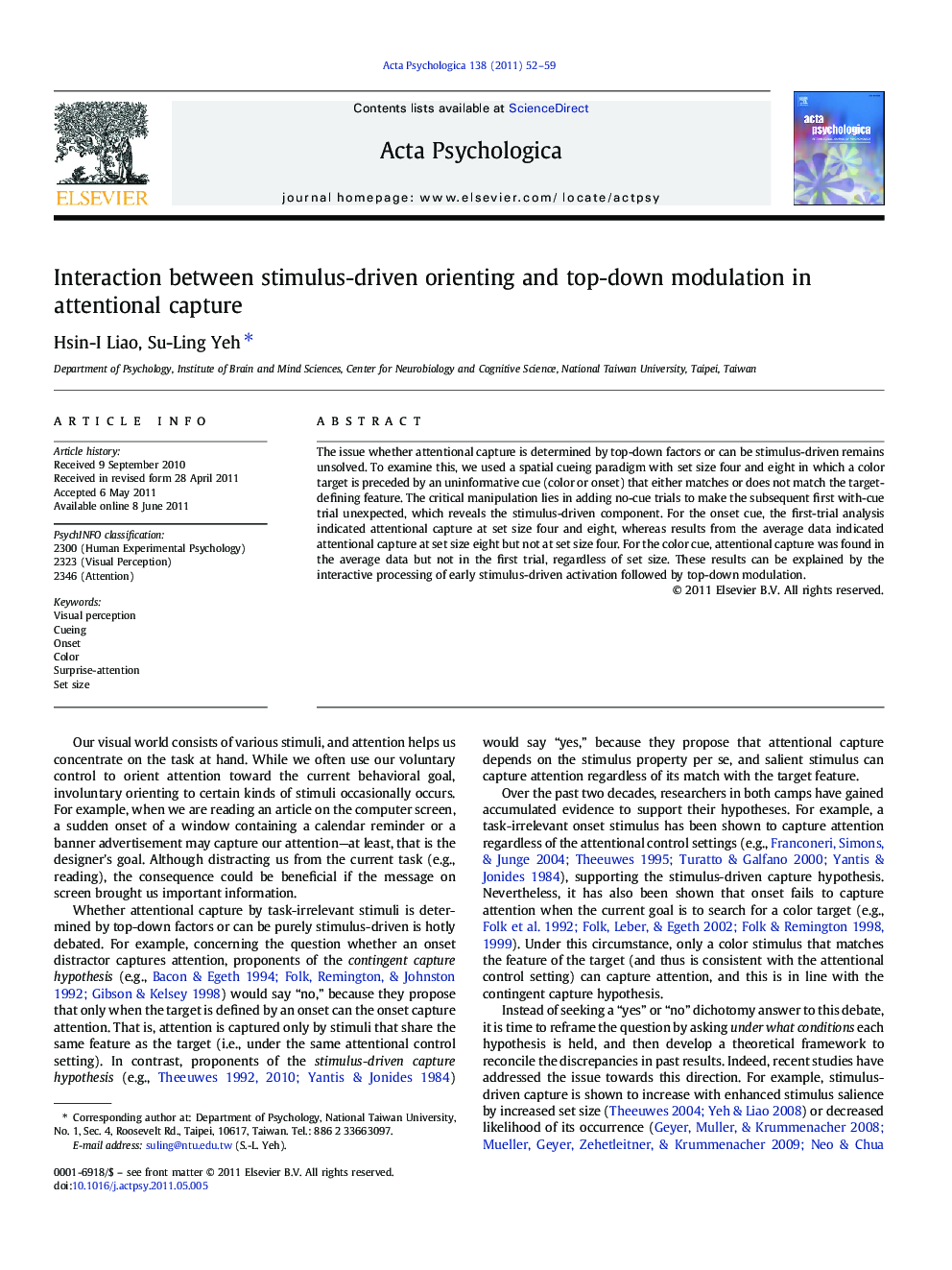| Article ID | Journal | Published Year | Pages | File Type |
|---|---|---|---|---|
| 920170 | Acta Psychologica | 2011 | 8 Pages |
The issue whether attentional capture is determined by top-down factors or can be stimulus-driven remains unsolved. To examine this, we used a spatial cueing paradigm with set size four and eight in which a color target is preceded by an uninformative cue (color or onset) that either matches or does not match the target-defining feature. The critical manipulation lies in adding no-cue trials to make the subsequent first with-cue trial unexpected, which reveals the stimulus-driven component. For the onset cue, the first-trial analysis indicated attentional capture at set size four and eight, whereas results from the average data indicated attentional capture at set size eight but not at set size four. For the color cue, attentional capture was found in the average data but not in the first trial, regardless of set size. These results can be explained by the interactive processing of early stimulus-driven activation followed by top-down modulation.
Research highlights►We add no-cue trials in a spatial cueing paradigm to make the first cue unexpected. ►We analyze the data in different ways to examine the interactive process. ►Stimulus-driven capture by onset is shown in the first unexpected trial. ►Contingent capture by color is shown in the average data. ►Increasing set size increases the possibility of stimulus-driven capture.
